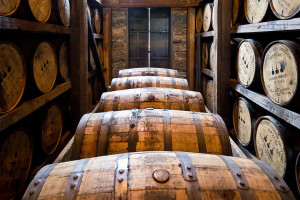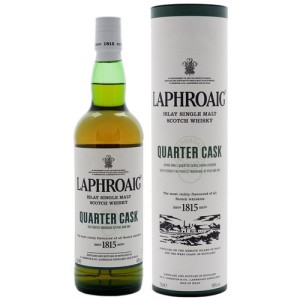Only a few years ago, a controversy raged in American whiskey circles about the use of small barrels in the craft whiskey sector. A big part of why the issue caught on among bourbon enthusiasts for a time is because, until the craft distilling movement started, the 53 gallon American Standard Barrel (ASB) was the beginning and the end for casks in the U.S. whiskey industry.
Elsewhere in the world whiskey industry, the use of smaller (or larger) casks wouldn’t have caused even so much as a second look, let alone have kicked up a furor. Because the Irish and Scottish whiskey models are based on the reuse of old barrels from other industries, casks in all manner of sizes and shapes are used.
Each of these different cask types has an impact on whiskey maturation for a variety of reasons, but two stand out as most important. First, a reused barrel carries with it some of the previous contents, imparting the flavors therein. This is especially the case for the first refill of that old barrel, hence part of the primacy of “first fill” whisky in the Scotch industry.
The second reason is that barrel size and shape can alter the amount of spirit relative to surface area of wood, increasing the interaction between the whiskey and the wood. Many American craft distillers adopted the use of smaller barrels because that increased wood surface area vis-a-vis the volume of spirit sped up the absorption of wood factors, such as vanillin. Conversely, bigger barrels means slower absorption, which may be desirable for a longer aging period.
Types Of Whiskey Casks
American Standard Barrel (200 liters/53 gallons): Because U.S. whiskey laws require most types of American whiskeys to use new barrels, the ASB has become the foundation of the world whiskey industry. Each year, hundreds of thousands of ASBs are dumped, creating a supply of surplus barrels used not just in other whiskey industries, but also in other maturing other spirits and even foods.
Hogshead (225 liters/59.4 gallons): The “hogshead” has been an English unit of measurement since at least the 15th Century. Today the term refers most often to a barrel made using recycled ASB staves. Five ASBs are broken down and rebuilt with new barrel heads as four hogsheads. This is the second most common type of whiskey barrel in the world, after the ASB they are drawn from.
Gorda (700 liters/184.9 barrels): This huge barrel was once used in the American whiskey industry, but is almost never seen anymore, and even then only as a blending vessel. The reason for its near extinction is its size, roughly triple that of an ASB. According to Chris Morris, Master Distiller at Woodford Reserve, a Gorda is “too big to rack up in an open rick warehouse, and also very difficult to char.”
Madeira Drum (650 liters/171.7 gallons): Squat Madeira casks are made using very thick French oak staves. In the whiskey industry they are most often used as a finishing cask, and less frequently for primary maturation.
Port Pipe (650 liters/171.7 gallons): Compared to their Madeira cousins, Port Pipes resemble giant ASBs. As the name implies, they are used to mature the barrel aged versions of Port wine.
Sherry Butt (500 liters/132 gallons): These tall casks are built with thicker staves, and are the most common type of cask in the sherry industry, and thus the most common sherry cask in the whiskey industry. The demand for Sherry butts in the Scotch industry in particular is so great that a whole supporting Sherry butt industry has grown up to support it, seasoning the casks with a Sherry style wine that is usually distilled into brandy rather than bottled as Sherry.
Machine Puncheon (500 liters/132 gallons): This is a squat cask made from thick staves of American oak, and used in the rum industry. After being used to mature rum, some find their way into the whiskey industry as a finishing barrel.
Sherry Puncheon (500 liters/132 gallons): Compared to the Machine Puncheon, this cask uses thinner staves of Spanish oak, and is a secondary barrel type for the Sherry industry. Afterwards they are reused in the whiskey industry, most often for secondary rather than primary maturation.
Barrique (300 liters/79.2 gallons): Barriques are a type of wine cask, bound with wood hoops in place of metal, and are used for wine cask finishes.
Quarter Cask (50 litres/13 gallons): These resemble smaller ASBs, and are known as “firkins” in the brewing community. As previously noted, smaller barrels of this type are used to get more interaction with the wood in a shorter space of time, and quarter casks were well-established in the Scotch industry long before the modern American micro-distillery boom.
Blood Tub (40 liters/10.5 gallons): This brewers cask is infrequently used by Scotch whisky-makers, and for the same reasons as one might choose a quarter cask. In terms of appearance, these are ovoid barrels, designed to be carried on the backs of horses and mules.
 The Whiskey Reviewer A World of Whiskey, Poured Every Weekday
The Whiskey Reviewer A World of Whiskey, Poured Every Weekday



I have a question regarding the dimensions (in inches) of the Madeira and the Gorda.
How tall are they and what is the diameter of the opening?
If someone could provide me this information via my email address, I would really appreciate it.
Randy